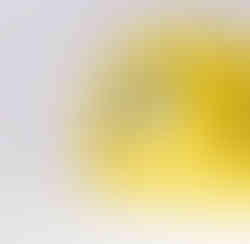Alocasia nebula 'Silver' ('Black Diamond') – Complete Care and Growing Guide
Alocasia nebula 'Silver', often called 'Black Diamond', is a rare and highly prized tropical houseplant known for its stunning metallic foliage. Native to the limestone forests of Sarawak, Borneo, this species displays thick, bullate leaves in a smoky silver tone with prominent deep green to near-black veins. Its compact growth and striking appearance make it a true collector’s gem for any serious plant enthusiast.
Origin and Natural Habitat of Alocasia nebula 'Silver'
Alocasia nebula originates from limestone-rich tropical forests in Sarawak, Malaysia (Borneo). It grows terrestrially in rocky, well-drained soils, often shaded by dense forest canopies. The region maintains a humid tropical climate with temperatures between 21–32°C, high year-round humidity above 70%, and annual rainfall of 2000–3000 mm. In its native environment, Alocasia nebula thrives in dappled light and stable, moist conditions without waterlogging.
Key Features of Alocasia nebula 'Silver'
- Foliage: Thick, textured silver-gray leaves with striking dark venation and a bullate (corrugated) surface.
- Undersides: Rich reddish-purple coloration adds contrast and depth.
- Compact Size: Reaches 30–40 cm height indoors under optimal conditions.
- Slow Growth: Moderate leaf production with seasonal growth spurts.
- Toxicity: Contains calcium oxalate crystals; toxic to pets and humans if ingested.
Alocasia nebula 'Silver' – Care Instructions
→ Placement and Light
Provide bright, indirect light. Avoid direct sunlight to prevent leaf scorch. Deep shade tolerance is higher than in many other Alocasia species. If natural light is insufficient, supplement with a full-spectrum grow light for 10–12 hours daily.
→ Watering
Allow the top 2–3 cm of soil to dry between waterings. Keep soil evenly moist but not soggy. Use filtered or rainwater to prevent mineral buildup on sensitive foliage.
→ Humidity
Maintain humidity between 70–80% for optimal leaf health. Use a humidifier, group with other tropical plants, or employ a pebble tray to boost moisture levels.
→ Temperature
Ideal range is 21–28°C. Avoid exposure to temperatures below 18°C to prevent stress or partial dormancy. Protect from cold drafts and rapid temperature changes.
→ Soil
Use a well-draining mix rich in organic matter, such as coconut coir, bark, perlite, and crushed charcoal. Adding crushed dolomite can benefit limestone-adapted species like Alocasia nebula.
→ Fertilization
Feed monthly during active growth with a balanced diluted liquid fertilizer. Avoid over-fertilizing, which can burn sensitive roots.
→ Repotting
Repot every two years or when roots crowd the pot. Choose containers with drainage holes and shallow depth to support the rhizomatous root system.
→ Propagation
Propagate by dividing rhizomes or by sprouting corms. Corm propagation requires patience, consistent warmth, and high humidity to encourage sprouting.
→ Semi-Hydroponic Growing
Performs well in semi-hydro setups using LECA or pumice. Ensure proper aeration around roots and maintain water levels carefully.
Common Problems and Solutions
→ Yellowing Leaves
Often caused by overwatering or soggy soil. Improve drainage and adjust watering frequency.
→ Browning Tips
Result of low humidity or salt buildup from fertilizers. Increase humidity and flush soil periodically.
→ Drooping Leaves
Indicates dehydration, temperature stress, or root disturbance. Check soil moisture and environmental stability.
→ Pests
Watch for spider mites, thrips, mealybugs, and fungus gnats. Treat with neem oil, insecticidal soap, or introduce beneficial insects.
→ Root Rot
Prevent by using a loose, airy substrate and avoiding waterlogged conditions. Repot immediately if detected.
Special Growing Tips for Alocasia nebula 'Silver'
- Rotate the plant occasionally for even light exposure and symmetrical growth.
- Wipe leaves gently with a damp cloth to remove dust and enhance photosynthesis.
- Use filtered light whenever possible to protect delicate bullate leaf surfaces.
- Provide support stakes if leaves grow very large and heavy.
Etymology and Botanical Background
The species name "nebula" comes from Latin, meaning "mist" or "cloud," referencing its ethereal silver foliage. Described in 1999 by botanist Alistair Hay, Alocasia nebula is closely related to Alocasia scabriuscula but distinguished by its smaller size and more dramatic venation pattern.
FAQs about Alocasia nebula 'Silver'
- How big does Alocasia nebula 'Silver' get indoors? Typically up to 30–40 cm in height with ideal care.
- Is Alocasia nebula 'Silver' pet safe? No, it is toxic to cats, dogs, and humans if ingested.
- Does it tolerate low light? It can survive in medium light but grows best in bright, filtered light.
- Best soil for Alocasia nebula? A well-draining mix of bark, coconut coir, perlite, and some crushed charcoal or dolomite for pH balance.
Order Your Alocasia nebula 'Silver' Today
Bring the exotic beauty of Borneo into your home with Alocasia nebula 'Silver'. Shop now at Foliage Factory and elevate your plant collection with this breathtaking rarity!
Alocasia nebula 'Silver' ('Black Diamond')
Alocasia nebula 'Silver' ('Black Diamond') comes in following sizes:
Baby Plant – is approximately 12 cm tall and comes in a ⌀ 6 cm pot
S – is approximately 15 cm tall and comes in a ⌀ 10.5 cm pot
M – is approximately 25 cm tall and comes in a ⌀ 12 cm pot

























































